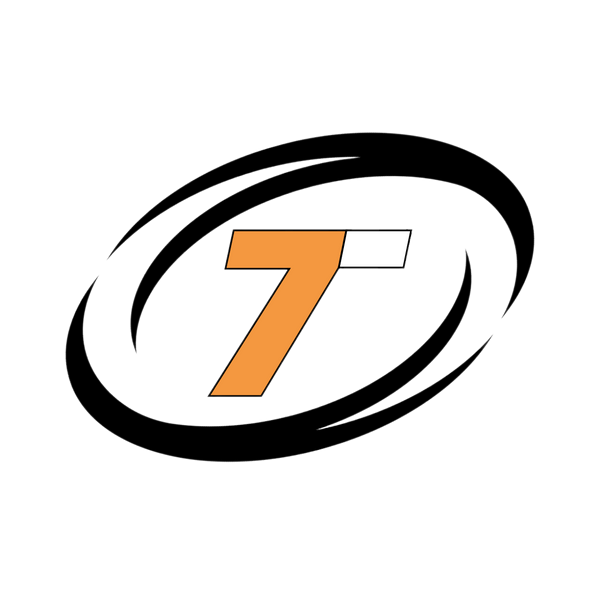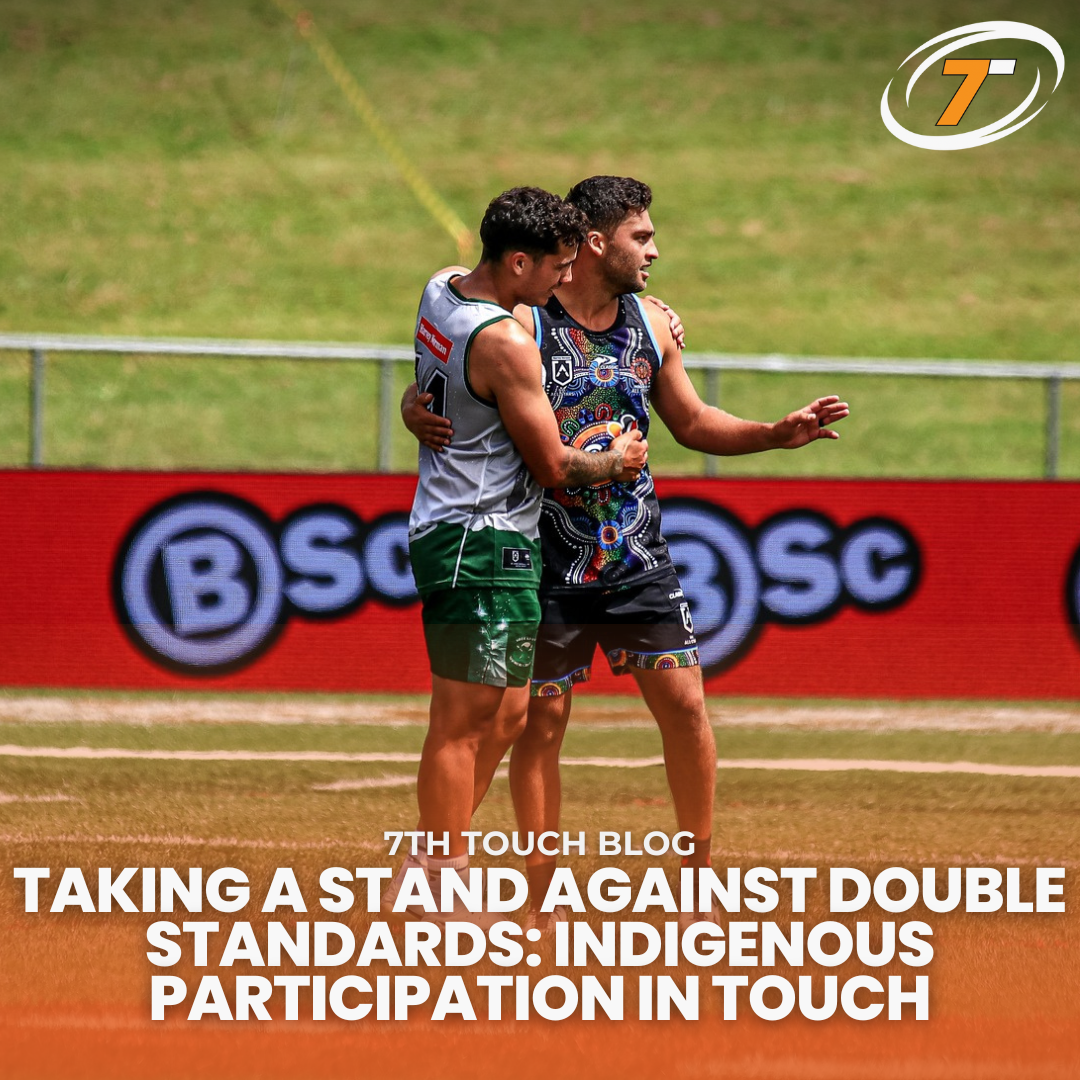Indigenous athletes have been some of the most celebrated yet underrepresented on the international sporting stage. They’re in a unique position: inspiring unity by representing both their heritage and their nation, all while being unapologetically themselves. While historically, they’ve only been able to wear their national colours, it’s time for that to change. Indigenous athletes should have the opportunity to represent their culture on the world stage in an official capacity — and Touch should set the standard.
In every sport around the world, athletes and teams compete under their country’s flag. But to First Nations competitors, that can mean representing oppressive settler-colonial states. There’s an opportunity there, then, to double down on the claim that Touch is the most inclusive sport in the world, and welcome Indigenous and First Nations entities into the international arena under their cultural banner.
Currently, though, Touch follows the same blueprint of all other sports: one nation, one team, with a standalone arena for Indigenous athletes to celebrate their culture (think All Stars, Māori Touch Nationals, Pacific Cup, etc.). But with the number of Indigenous athletes that not only compete in our sport, but dominate it, one can't help but feel that there’s room for our Indigenous athletes to have the opportunity to wear a uniform branded with the flag of their heritage rather than the flag of their nation.

The All Stars clash is an arena where Indigenous Touch players can represent their culture.
We talk all the time about how Touch needs to grow. We talk all the time about the need to develop Touch globally. We talk all the time about the international scene being a two-horse race between Australia and New Zealand. Why don’t we actually act on all that talk? The best two nations in the world just so happen to have a large Indigenous population. So imagine eligible players from those nations having the opportunity to choose which side they get to represent on the international Touch stage like any other eligible players with multiple lines of heritage. Yes, it may weaken the "national" teams. But with those national teams being so dominant year after year, is that such a bad thing? Having native teams, particularly Māori and Indigenous sides, immediately creates more quality competition, splits the talent pool of those nations and therefore helps to bridge the performance gap between them and the rest of the world.
Why haven’t they had opportunities yet? Let’s look at the Federation of International Touch’s (FIT) Tier Events system, which is what prevents Indigenous sides from competing in international Touch events. Specifically, Tiers 1 and 2 read:
- Tier 1A: global or international competition for national representative teams of Member Countries in Opens or Senior divisions, e.g. Touch World Cup
- Tier 1B: global or international competition for national representative teams of Member Countries in Youth or Junior divisions, e.g. Youth Touch World Cup
- Tier 2A: established multi-national Regional competition for national representative teams of Member countries in Open, Senior or Youth divisions, e.g. European Touch Championships (the proper, fully capped event)
- Tier 2B: developmental multi-national competition for national representative teams of Member countries in Open, Senior or Youth divisions, e.g. European Touch Cup (the uncapped events that took place in August)
The language used here restricts the participation of Indigenous sides in international Touch. But there’s more than one loophole (and even flat out contradictions) to be addressed with regard to the tier system.
The most common argument against Indigenous participation in Touch is ‘one nation, one team’. But you only have to look as far as the recent tournaments in Europe to see the flaw in that. The Men's and Women's Open grades at the European Opens Touch Cup (EOTC) last month featured three England teams in each division. Now you could argue that was for a Tier 2B event — it was developmental and uncapped. OK, understood, but then what about when the exact same thing happens at a Tier 2A event? The 2025 Atlantic Youth Touch Cup featured two England sides each in the U15 Mixed and U20 Men’s divisions. It was the exact same at the 2023 Euros in the Women’s 27s and Women’s 40 grades, and again at the 2022 Euros in the 30 Mixed division. Those examples are all within the last three years. Do those instances fall under the ‘one nation, one team’ rule?

England had three separate teams in two different divisions at EOTC 2025.
Again, if the European tournaments that took place last month are regarded as Tier 2B events because they were ‘developmental’ and not ‘established’, then that’s understandable. But what will next year’s Asia Pacific Touch Cup be classed as? Premier international events that will no doubt feature Australia and NZ. But it will also be the first event of its kind for both the Opens in April and Seniors in September, so surely it can’t be seen as an ‘established’ tournament. If it does get classified as a Tier 2B event, would Indigenous teams be invited to participate?
Another argument is that England is a fully-fledged Member nation of FIT, something that can’t be said of Indigenous teams. While that’s true, let’s go ahead and apply that logic to the Eurostars, a team filled with players from all over Europe (sometimes the world) playing under one banner. The Eurostars are also not a Member nation of FIT, yet they’ve competed at last month’s European Seniors Touch Cup (Tier 2B) and at Euros (Tier 2A) as recently as 2023. Heck, they even played at the pinnacle of our sport, the 2019 Touch World Cup (Tier 1A) in Malaysia. It’s classic plausible deniability, being able to selectively interpret the rulebook when it suits. So if the current rules allow concessions for some, why not for others?

Eurostars are afforded the opportunity to compete in the international arena.
Now, the common counterpoint will be around competitiveness and “actual” global development. Wouldn’t inviting Indigenous teams just increase the likelihood of a final between any combination of Australia, Indigenous, Māori and New Zealand? Potentially. But there's an argument to be made on both sides of the coin there. The aim of the EOTC was about “developing Touch across the region”, but both Men’s and Women’s finals were still all-England affairs. All six English teams made the semi finals and claimed five of the six medals in those two divisions. However it ticked the ‘development’ box because England, rather than stack one team with the best players available, stretched their High Performance players across all six teams, essentially diluting the calibre of each side and, in theory, making them more vulnerable against other competing nations. Fair play. But if that was the case there, then shouldn’t that same logic be applied to the case here of Indigenous teams as well?
To further that point, assuming an Aus/Indigenous/Māori/NZ final at any tournament would dismiss the very real development of nations sitting on the cusp of that upper echelon. You only have to look at the closeness of the competition at last year’s Touch World Cup and the performance of the likes of England, Lebanon, Japan and Cook Islands to see they aren’t too far behind the Trans Tasman rivals. The uncertainty of the result between any two of those nations is what spectators would tune in to watch.
However, the point being made here is one of fairness and equality. The hypocrisy is clear for everyone to see. Precedent has been set, continuously, for flexibility in certain cases in the past. Why can’t that precedent be met for all?

As well as talent, Indigeneity on the world stage can provide a crucial platform for cultural identity, empowerment and pride.
Let’s be clear: this opinion isn’t about diminishing the value of existing FIT tournaments, or the governing body itself. They have the game’s best interests in mind and serve an important role in the global Touch landscape. Nor does it set out to target England Touch specifically. They’ve worked hard both on and off the field to be in the position they’re in, and, as the only Tier 1 nation in the northern hemisphere, are often the ones hauling the game forward in Europe. They’re simply the beneficiaries from certain concessions in the past. But this is about the system itself that is used in our sport — that’s what should change. Touch is the most inclusive sport in the world, so why not be front runners of that change when it comes to welcoming Indigenous participation? If the traditionalist view of the 'one nation, one team' system remains in place, then, at the very least, implement the rules of that system in all cases, not just some. The inconsistencies about when rules are applied is confusing and hypocritical. Because why should some groups be afforded flexibility while others are consistently turned away? If Indigenous teams are excluded from events while European nations get concessions, the message sent is clear: some development pathways matter more than others. And that’s a reality we, as a Touch community, should feel uncomfortable with.
Touch as a sport can make a decision. It can continue to apply rules selectively, leaving certain communities on the outer. Or it can open the door, event just a crack, to include them in the global calendar. The latter path would only enrich the game, strengthen competition, make our game truly inclusive — like we love to claim that it is — and set a new world standard while we’re at it.


2 comments
No disagreement with any of your points, but just to note that at AYTC and Euros (since 2022 at least) England 2nd teams and Eurostars have been allowed to enter to bulk out a division, but their matches are not capped internationals and the teams are not eligible to be placed within their division (so effectively finish bottom after the round robin stage). This may not be an appropriate outcome for indiginous teams, and may not be as tempting for representative players to switch from their national sides. This doesn’t mean your proposal shouldn’t be considered, just that the European tournaments aren’t a perfect precedent.
I 💯 agree with this for First Nation Mob and our Māori Brothers & Sisters to Rep our Mob this is the time. This will allow our community and mob to fellow also support.